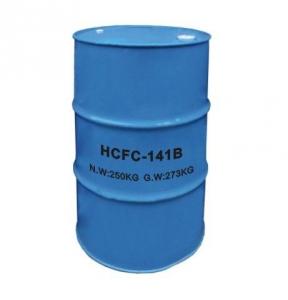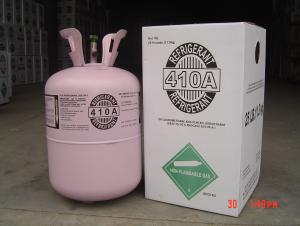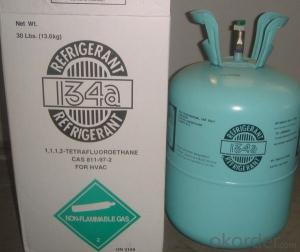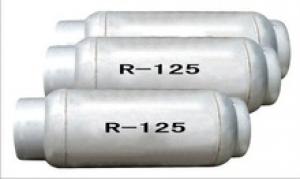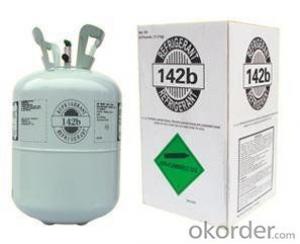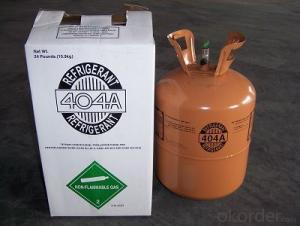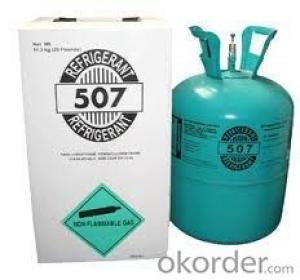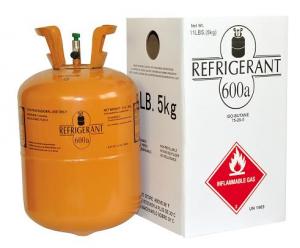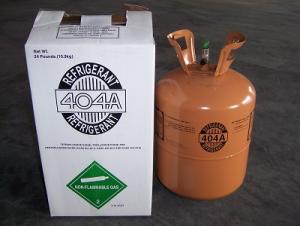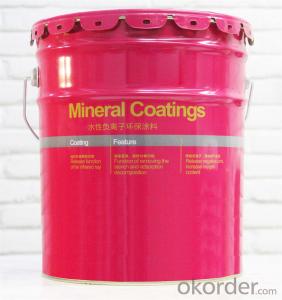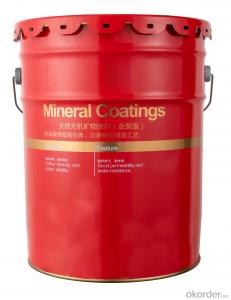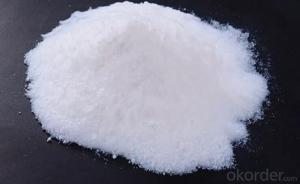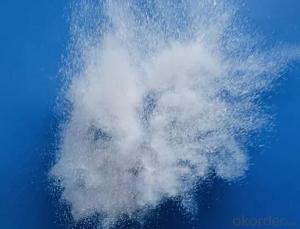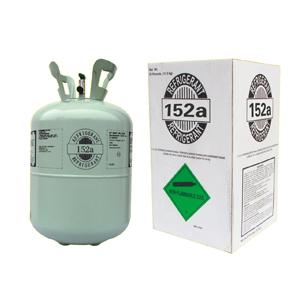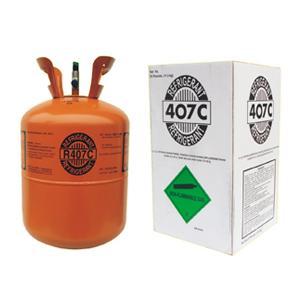R141b
- Loading Port:
- Shanghai
- Payment Terms:
- TT OR LC
- Min Order Qty:
- -
- Supply Capability:
- 1000MT m.t./month
OKorder Service Pledge
OKorder Financial Service
You Might Also Like
Specifications
Good Quallity;
Competitive Price;
Cleaning Agent;
Foaming Agent
Dichlofluoroethane(R141b)
R141b (HCFC-141b) is the leading substitute blowing agent for CFC-11 in rigid foam insulation materials which are widely used for residential and public constructions, home applications and transport vehicles.
Properties:
Index | Unit | R141b |
Chemical formula |
| CH3CCl2F |
Molecular weight | g/mol | 117.0 |
Boiling Point 101.3 KPa(°C) | °C | 32.1 |
Freezing Point 101.3 KPa(°C) | °C | -103.5 |
Critical Pressure | KPa | 4640.2 |
Critical Temperature (°C) | °C | 210.2 |
Saturated liquid density (25°C) | Kg/m3 | 1227 |
Specific heat (25°Cliquid) | KJ/kg·k | 1.17 |
ODP |
| 0.11 |
GWP |
| 0.09 |
Quality Specification:
Index | Quality Performance |
Appearance | Bright & Clear Liquid |
Odor | No strange stench |
Purity %≥ | 99.9% |
Moisture %≤ | 0.005 |
Acidity(as HCL) %≤ | 0.00001 |
Evaporation residue %≤ | 0.01 |
Chlorides(Cl-) test %≤ | 0.0003 |
R141b Packing: 13.6kg/30lb; 30kg, 250kg drum.
- Q:What is carbohydrate? What is organic? What is it?
- Most organic compounds mainly contain carbon, hydrogen two elements, in addition often contain oxygen, nitrogen, sulfur, halogen, phosphorus and so on. Part of the organic matter from the plant sector, but the vast majority of oil, natural gas, coal as raw materials, through artificial synthesis method. Compared with inorganic substances, the number of organic matter, up to several million kinds. The carbon atoms of the organic compound have a very strong ability to bind to each other to form a carbon or carbocyclic ring. The number of carbon atoms can be 1,2, it can be thousands, tens of thousands, many organic polymer compounds can even have hundreds of thousands of carbon atoms. In addition, the isotopic phenomenon of organic compounds is very common, which is one of the reasons for the many organic compounds. Organic compounds in addition to a few, can generally burn. Compared with inorganic matter, their thermal stability is relatively poor, the electrolyte is easy to heat decomposition. The melting point of organic matter is low, generally not more than 400 ℃. The polarity of organic matter is very weak, so most of the water is not soluble. The reaction between organic matter, mostly intermolecular reactions, often requires a certain activation energy, so the reaction is slow, often requiring catalyst and other means. And the reaction of organic matter is more complex, under the same conditions, a compound can often be several different reactions at the same time, generate different products.
- Q:What is the hydrocarbon thing
- Hydrocarbon, which is composed of two elements, consists of carbon and hydrogen. It is called a hydrocarbon and a hydrocarbon, which reacts with chlorine, bromine vapor, oxygen and so on. It does not react with strong acid, strong base, strong oxidizer (Such as: potassium permanganate) reaction, such as methane and chlorine in the light conditions of reaction to produce methyl chloride, dichloromethane, chloroform (chloroform) and tetrachloromethane (carbon tetrachloride) and other derivatives in the Hydrocarbon molecules in the carbon atoms connected to each other to form a carbon chain or carbon ring molecular skeleton, a certain number of hydrogen atoms attached to the carbon atoms, so that each carbon atom to maintain the price of the type of hydrocarbon is very much, the structure of known hydrocarbons More than 2,000 hydrocarbons are the parent of an organic compound. Other organic compounds can be seen as derivatives of one or more hydrogen atoms in the hydrocarbon molecule that are replaced by atoms or radicals of other elements. Word, is the use of "carbon" consonant with "hydrogen" vowel synthesis of a word, with "carbon" and "hydrogen" the composition of the internal structure of the word, the hydrocarbon is the parent of all organic compounds can be said that all Organic compounds are nothing but the result of replacing some of the atoms in the hydrocarbons with other atoms.
- Q:Why does the molecular atom compound do not belong to the life structure
- Life structure is composed of CHO as the main element through the covalent bond of the combination of hydrocarbons and their derivatives, and you said the molecular atomic compounds are usually atomic or ionic bond
- Q:What is the most primitive person on earth?
- These macromolecules are not in the modern sense of the protein and nucleic acid polymer, but a variety of amino acids, nucleosides, phosphoric acid, carbohydrates and some other small molecules of the disorder of the polymer, when the nucleoside and phosphoric acid composition of nucleoside Acid, and gradually form a nucleotide chain, the formation of these nucleotide chain of the amino acid on the formation of the field of binding force, and then assembled peptide chain. Or by the combination of a variety of amino acids into peptide chain formed by the force field on the surrounding nucleus formation field binding effect, and then assembled the nucleotide chain, with the formation of peptide chain and nucleotide chain longer and longer , The molecular weight is growing, and ultimately the formation of nucleic acids and proteins, nucleic acid and protein formation is the product of interaction with each other, is generated at the same time.
- Q:Why not ah?
- A series of compounds in which a hydrogen atom in a hydrocarbon molecule is replaced by another atom or radical is called a derivative of a hydrocarbon
- Q:Carbon compounds (except inorganic carbon compounds), hydrocarbons and derivatives of the general term is?
- Hydrocarbons and hydrocarbon derivatives
- Q:Why artemisinin and its derivatives in the molecular structure of a peroxide chain, the chemical properties are more stable?
- Stable, then it will not be 60 degrees that is broken down, there is no need for rectal administration ... ...
- Q:NH4HCO3 and so have C atoms ah, why still inorganic
- Organic matter is a general term for carbon compounds (except carbon oxides, carbon dioxide, carbonates, carbonates, bicarbonates, metal carbides, cyanides, thiocyanides and other oxides) or hydrocarbons and their derivatives. Organic matter is the material basis for life. The inorganic compound usually refers to a compound containing no carbon element, but a few carbon-containing compounds such as carbon dioxide, carbonic acid, carbon monoxide, carbonate and the like do not have the properties of an organic substance, and therefore such substances are also inorganic.
- Q:Are all carbon compounds all organic?
- No, carbon dioxide and carbonates, bicarbonate is not it
- Q:The functional group of the derivative of the hydrocarbon
- Yes, the number of carbon after a certain, only to determine the nature of the functional group. This is also the reason for the name of the functional group
1. Manufacturer Overview |
|
|---|---|
| Location | |
| Year Established | |
| Annual Output Value | |
| Main Markets | |
| Company Certifications | |
2. Manufacturer Certificates |
|
|---|---|
| a) Certification Name | |
| Range | |
| Reference | |
| Validity Period | |
3. Manufacturer Capability |
|
|---|---|
| a)Trade Capacity | |
| Nearest Port | |
| Export Percentage | |
| No.of Employees in Trade Department | |
| Language Spoken: | |
| b)Factory Information | |
| Factory Size: | |
| No. of Production Lines | |
| Contract Manufacturing | |
| Product Price Range | |
Send your message to us
R141b
- Loading Port:
- Shanghai
- Payment Terms:
- TT OR LC
- Min Order Qty:
- -
- Supply Capability:
- 1000MT m.t./month
OKorder Service Pledge
OKorder Financial Service
Similar products
New products
Hot products
